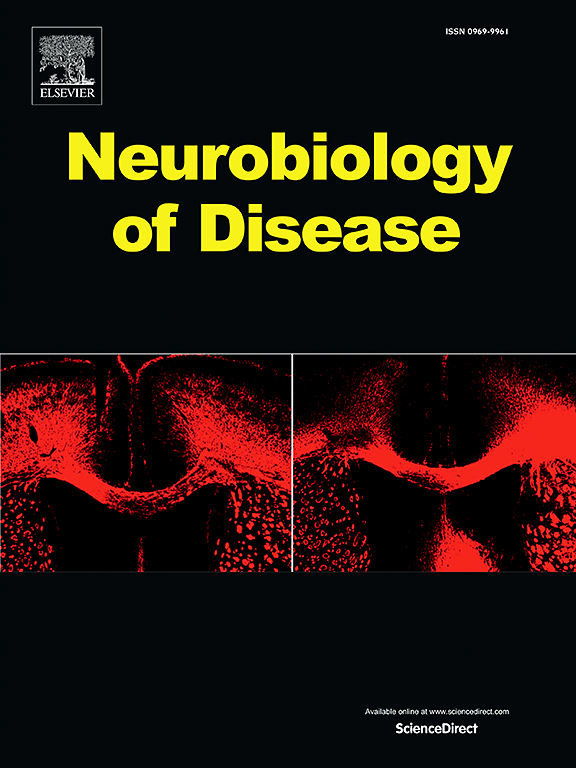Network models incorporating chloride dynamics predict optimal strategies for terminating status epilepticus
IF 5.6
2区 医学
Q1 NEUROSCIENCES
引用次数: 0
Abstract
Status epilepticus (SE), seizures lasting beyond five minutes, is a medical emergency commonly treated with benzodiazepines which enhance GABAA receptor (GABAAR) conductance. Despite widespread use, benzodiazepines fail in over one-third of patients, potentially due to seizure-induced disruption of neuronal chloride (Cl−) homeostasis. Understanding these changes at a network level is crucial for improving clinical translation. Here, we address this using a large-scale spiking neural network model incorporating Cl− dynamics, informed by clinical EEG and experimental slice recordings. Our simulations confirm that the GABAAR reversal potential (EGABA) dictates the pro- or anti-seizure effect of GABAAR conductance modulation, with high EGABA rendering benzodiazepines ineffective or excitatory. We show SE-like activity and EGABA depend non-linearly on Cl− extrusion efficacy and GABAAR conductance. Critically, cell-type specific manipulations reveal that pyramidal cell, not interneuron, Cl− extrusion predominantly determines the severity of SE activity and the response to simulated benzodiazepines. Leveraging these mechanistic insights, we develop a predictive framework mapping network states to Cl− extrusion capacity and GABAergic load, yielding a proposed decision-making strategy to guide therapeutic interventions based on initial treatment response. This work identifies pyramidal cell Cl− handling as a key therapeutic target and demonstrates the utility of biophysically detailed network models for optimising SE treatment protocols.
结合氯动力学的网络模型预测终止癫痫持续状态的最佳策略。
癫痫持续状态(SE),癫痫发作持续超过5分钟,是一种医疗紧急情况,通常用苯二氮卓类药物治疗,增强GABAA受体(GABAAR)的传导。尽管广泛使用,苯二氮卓类药物在超过三分之一的患者中失效,可能是由于癫痫引起的神经元氯离子(Cl-)稳态的破坏。在网络层面理解这些变化对于改善临床翻译至关重要。在这里,我们通过临床脑电图和实验切片记录,使用包含Cl-动力学的大规模尖峰神经网络模型来解决这个问题。我们的模拟证实,GABAAR逆转电位(EGABA)决定了GABAAR电导调节的促或抗癫痫作用,高EGABA使苯二氮卓类药物无效或兴奋。我们发现类硒活性和gababa与Cl-挤出效率和GABAAR电导率呈非线性关系。关键的是,细胞类型特异性操作表明,锥体细胞,而不是中间神经元,Cl-挤压主要决定SE活性的严重程度和对模拟苯二氮卓类药物的反应。利用这些机制的见解,我们开发了一个预测框架,将网络状态映射到Cl-挤压能力和gaba能负荷,从而提出了基于初始治疗反应的指导治疗干预的决策策略。这项工作确定锥体细胞Cl-处理是一个关键的治疗靶点,并展示了生物物理详细网络模型用于优化SE治疗方案的实用性。
本文章由计算机程序翻译,如有差异,请以英文原文为准。
求助全文
约1分钟内获得全文
求助全文
来源期刊

Neurobiology of Disease
医学-神经科学
CiteScore
11.20
自引率
3.30%
发文量
270
审稿时长
76 days
期刊介绍:
Neurobiology of Disease is a major international journal at the interface between basic and clinical neuroscience. The journal provides a forum for the publication of top quality research papers on: molecular and cellular definitions of disease mechanisms, the neural systems and underpinning behavioral disorders, the genetics of inherited neurological and psychiatric diseases, nervous system aging, and findings relevant to the development of new therapies.
 求助内容:
求助内容: 应助结果提醒方式:
应助结果提醒方式:


